A Porsche 911 and a Tesla Cybertruck roar off the starting line. The former is seemingly the quicker vehicle, but is quickly overtaken by the latter. To accentuate their difference in caliber, the video cuts to a different camera angle, revealing that the Cybertruck was actually towing another Porsche 911.
This scene was showcased as part of a video played by Tesla during an event marking the inaugural delivery of Cybertruck vehicles. The intent was clear: judge the new electric vehicle model not by its size and shape, but by its acceleration and inherent qualities.
About the Cybertruck
On November 30, Cybertruck deliveries commenced at Tesla’s factory in Texas, four years after its initial debut. Elon Musk, CEO of Tesla, was present, personally opening the doors for the first batch of customers.
The Cybertruck doesn’t look like a traditional pickup truck. Its entire body is made of an austenitic stainless steel alloy, departing from the streamlined design commonly seen in cars. Opting for sharp, straight lines, its material and design choices are equally bold and futuristic, with Musk once claiming that mass producing the Cybertruck is an “impossible task” in the automotive industry.
Nonetheless, the cyberpunk aesthetic has attracted a significant following. Unveiled in November 2019, the Cybertruck secured 146,000 orders within 40 hours, and industry tracking data now indicates nearly 2 million reservations.
While Musk did not disclose the price during the delivery event, Tesla’s website was subsequently updated with the Cybertruck’s prices and detailed configuration parameters. The Cybertruck comes in three versions: single-motor rear-wheel drive (RWD), dual-motor all-wheel drive (AWD), and tri-motor and high-performance AWD known as the “Cyberbeast.” They are priced at USD 60,990, USD 79,990, and USD 99,990 respectively.
While the pricing might not be as aggressive as expected, given comparisons with already-launched electric pickup trucks like the Ford F-150 Lightning and Rivian R1T, the Cybertruck’s popularity seems impervious to its non-budget-friendly tag.
In Tesla’s product lineup, the Cybertruck distinguishes itself from the Model 3 and Model Y, establishing its unique identity. However, in terms of technology and engineering, encompassing features like a bulletproof body, steer-by-wire, 4680 cylindrical batteries, and 9,000-ton casting technology, the Cybertruck evidently signifies Tesla’s progression into the next technological era.
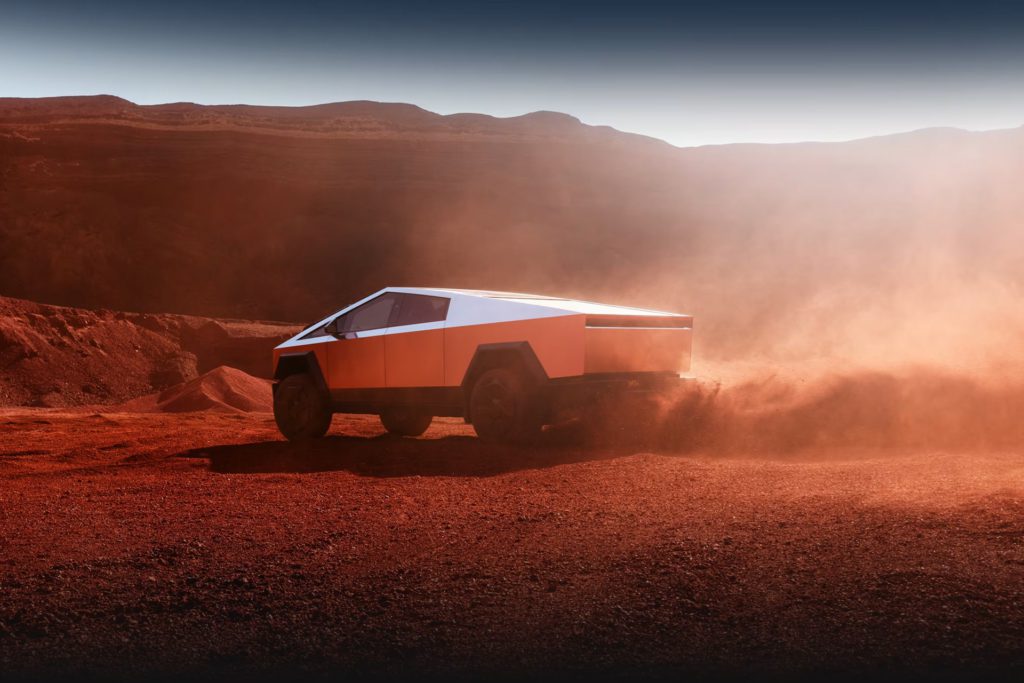
Faster, stronger, bulletproof, and powerful
During Cybertruck’s design phase, Musk aimed to create a futuristic vehicle. Despite its controversial appearance at the initial reveal, Musk insisted on mass producing the Cybertruck.
The distinctive design is, to some extent, an added value, but the core lies in the Cybertruck’s unique materials. According to Musk, the vehicle uses the same stainless steel alloy as SpaceX’s rockets, resulting in exceptional strength. To illustrate, Tesla showcased video demonstrations of collision scenarios, such as a frontal collision at nearly 37 miles per hour, where the Cybertruck’s A-pillar remained intact.
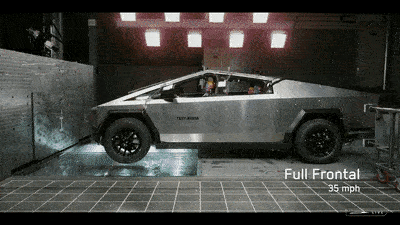
In addition to its robust body, the Cybertruck is bulletproof. Musk jokingly explained: “People ask me why the body needs to be bulletproof. I say, why not?”
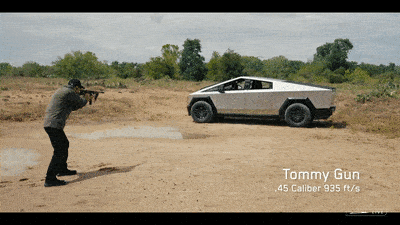
The Cybertruck’s windows are also touted for their durability. To demonstrate, Franz von Holzhausen, chief designer of Tesla, threw baseballs at the vehicle’s windows from different angles, with the windows remaining unscathed.
This was a redemption from a previous “publicity mishap.” During a 2019 event, von Holzhausen threw steel balls at the Cybertruck’s windows, shattering it in the process. Musk awkwardly commented at the time: “Maybe we used a little too much force.”
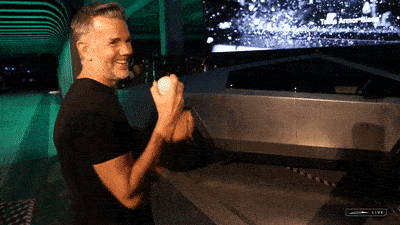
As an electric pickup truck, the Cybertruck’s power and traction performance are commendable.
Acceleration is a traditional forte for Tesla, and the Cybertruck, competing against a Porsche 911 while towing another one, still manages to outperform. The vehicle also won a 4,000-pound traction test against competing models like the Ford F-150 Lightning, Ford F-350, and Rivian R1T.
The Cybertruck’s payload capacity, the weight it can carry in its cargo bed, is 2,500 pounds, which is a respectable figure. For reference, the Ford F-150 Lightning’s payload capacity tops at 2,200 pounds, while the upcoming Stellantis Ram 1500 Rev is expected to carry up to 2,700 pounds.
Musk is aiming to make the Cybertruck a cooler and more futuristic model, incorporating Tesla’s latest technologies such as four-wheel steering, steer-by-wire, and the proprietary 4680 cylindrical battery. These innovations are expected to enhance the driving experience significantly, with features like four-wheel steering allowing the Cybertruck to make a U-turn in a smaller radius than the Model S.
The Cybertruck is also Tesla’s first model to feature steer-by-wire technology. This system eliminates the need for a traditional steering column, using electronic signals to control the motor and tires directly instead. This not only enables more precise adjustment of parameters like steering angle and force feedback, but also prepares the vehicle for future autonomous driving control.
According to previous Tesla disclosures, the Cybertruck will be equipped with the latest HW 4.0 hardware for the autonomous driving system, supporting future “Full Self-Driving” (FSD) updates.
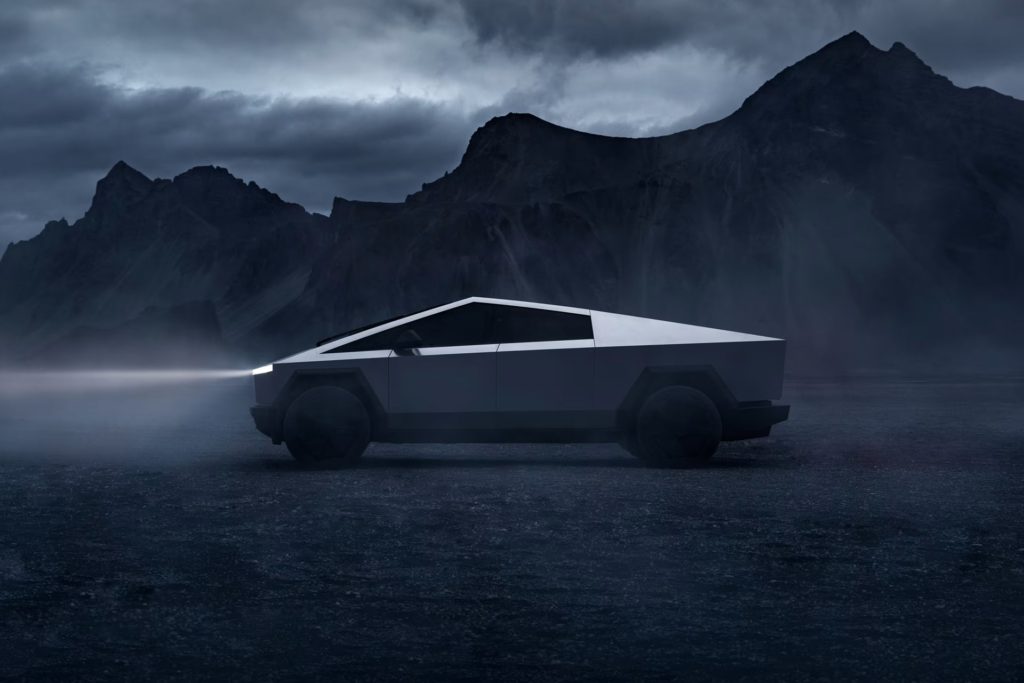
Igniting the North American market
Since the release of the Model Y in March 2019, the Cybertruck is the first genuinely new vehicle from Tesla.
For the Chinese market, pickup trucks are relatively niche, but in the American automotive market, they are a crucial segment. Pickup trucks are versatile, serving various needs from daily use to production operations and off-road adventures, making them popular. Recent data shows that the pickup truck market in the US has steadily grown, constituting 20.5% of new vehicle sales in 2022, up from 16.8% in 2016. Bestsellers like the Ford F-Series have also seen substantial year-on-year growth.
With a mature lineup of sedans and sport utility vehicles (SUVs), Tesla’s move into the pickup truck segment is unsurprising. In the first three quarters of this year, Tesla’s sales in its North American home base showed signs of weakness, with Toyota’s new hybrid products surpassing Tesla’s growth rate. For Tesla, the Cybertruck is a weapon to penetrate the North American market and reach the next sales peak.
Considering the size of the pickup truck market and the performance of industry players like Ford, securing two million orders for the Cybertruck does not seem exaggerated. However, delivery success will not only test market acceptance but also places higher demands on Tesla’s engineering capabilities.
In the years leading up to the Cybertruck’s development, electric pickup trucks were already not a novelty in the US, with Ford producing the F-150 Lightning and new players like Rivian R1T hitting the roads. The competition in this space has intensified during this period.
For example, in terms of range, the official figures for the Cybertruck show approximately 250–340 miles, comparable to the Ford F-150 Lightning’s 230–320 miles and the Rivian R1T’s 270–350 miles. While the Cybertruck does not exhibit a unique advantage in this regard, it’s worth noting that pickups generally offer redundant space for battery installation due to their larger size and wider chassis. The Cybertruck also provides a similar option, allowing customers to add an extra set of batteries under the chassis, extending the range for the RWD and high-performance AWD versions from approximately 340 to 470 miles and 320 to 440 miles respectively.
Ultimately, delivery remains one of the more challenging tasks at hand for Tesla. Whether it’s the stainless steel body or the in-house 4680 battery, both are considered hurdles for large-scale production. According to sources, the yield rate of good units for the 4680 battery is just over 80%, and Tesla is currently exploring external suppliers. The global capacity for this new technology remains relatively limited.
Tesla needs to simultaneously push for deliveries and lead the industry in overcoming the challenges of mass producing the 4680 cylindrical battery. Once successful, Tesla will undoubtedly open a new chapter in its technological landscape.
KrASIA Connection features translated and adapted content that was originally published by 36Kr. This article was written by Peng Suping for 36Kr.

